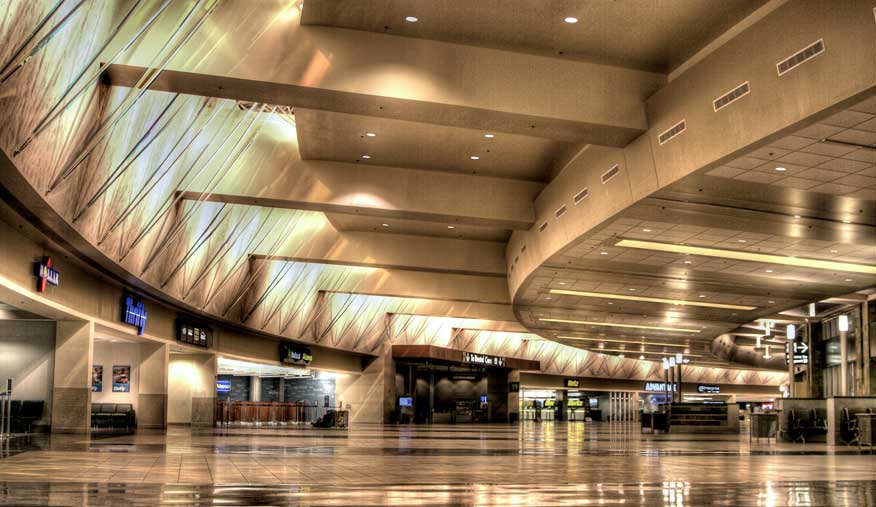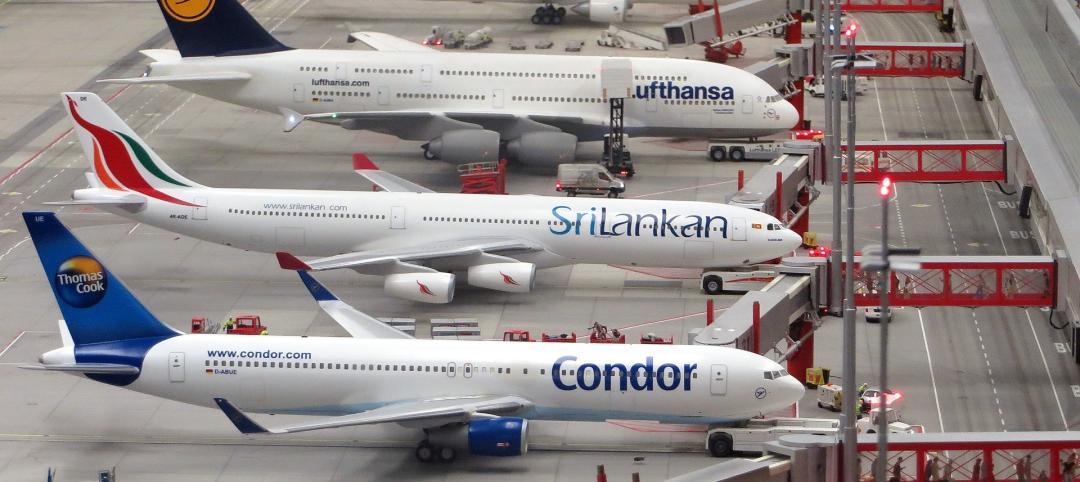The Federal Aviation Administration forecasts that air travel in the U.S. will increase by about 50% in the next 20 years. Are airports ready for that surge? More important, can airports provide the kind of frictionless experience that passengers will expect and demand?
To explore these questions, last February engineering giant Arup conducted a “salon” in San Francisco on the future of aviation. Invitees were a diverse mix of 22 experts representing airport operators, planners, developers, engineers, and manufacturers, including some—like representatives from Autodesk, Intel, and Visa—who offered a broader context.
Arup let BD+C take a peek at a draft of its report on the salon’s key points. The report identifies core themes for three primary stakeholders—the airlines, passengers, and airports—that revolve around “choreographed seamlessness,” “connected and predictable” service, and productive systems. Design can drive airport efficiency, but only when there’s positive cooperation among stakeholders.
Passenger satisfaction often begins with “technological convergence” that facilitates easier mobility and processing. “Touchless screening, automated check-in, tailored retail services, and real-time operational information could stimulate the seamless experience,” the draft stated.
However, technology is developing faster than the aviation industry can devise purposes for it. On the other hand, “no tech trumps high tech,” meaning that passengers still prefer a humanistic, natural environment. “The future of technology will always be about the people who use it.”
Other lessons learned:
• Technology shrinks future airport concrete. Huge spaces once allocated for check-in and security should be reconsidered as passengers adapt to self-service options.
• Collaboration frees technology. Barriers between airlines, airports, regulators, and technology providers will only thwart process enhancements.
• Your bag will have its own identity. Renovation and new construction of airport terminals often focuses on streamlining baggage-handling systems. While paper bag tags aren’t going away, it’s only a matter of time before luggage that’s traceable via bar codes or RFID chips becomes available for purchase in stores.
• The future of retail is at the airport. Retail, food, and beverage are big revenue streams for airports. That might explain why some large hubs have turned their terminals into shopping malls.
• Your journey will be branded. Airlines currently control the traveler’s experience, but the salon’s participants see opportunities for other entities—including airports themselves—“to occupy the passenger’s cognitive space.”
Another theme from the salon: the need for “intelligent” ground transportation that “allows riders comfort in knowing their entire journey is accounted for before boarding.” Technology could help passengers pre-plan and customize their trip along all journey touch points, like scheduling and predicting arrival times for door-to-hotel transport, or tracking luggage in real time.
Many of the salon’s attendees highlighted the need to ensure that regulatory actions—especially those relating to security, customs, and immigration—are enforced in ways that minimize passenger delays.
Related Stories
Urban Planning | Feb 5, 2024
Lessons learned from 70 years of building cities
As Sasaki looks back on 70 years of practice, we’re also looking to the future of cities. While we can’t predict what will be, we do know the needs of cities are as diverse as their scale, climate, economy, governance, and culture.
Products and Materials | Jan 31, 2024
Top building products for January 2024
BD+C Editors break down January's top 15 building products, from SloanStone Quartz Molded Sinks to InvisiWrap SA housewrap.
Airports | Jan 30, 2024
Rafael Viñoly Architects’ design for the new Florence, Italy, airport terminal will feature a rooftop vineyard
At Florence, Italy’s Aeroporto Amerigo Vespucci, the new international airport terminal will feature a fully operating vineyard on the facility’s rooftop. Designed by Rafael Viñoly Architects, the terminal is expected to see over 5.9 million passengers annually. Renderings for the project have recently been released.
Airports | Jan 15, 2024
How to keep airports functional during construction
Gensler's aviation experts share new ideas about how to make the airport construction process better moving forward.
Airports | Dec 4, 2023
4 key innovations and construction trends across airport design
Here are some of the key trends Skanska is seeing in the aviation sector, from congestion solutions to sustainability.
Giants 400 | Nov 13, 2023
Top 60 Airport Facility Construction Firms for 2023
Hensel Phelps, Turner Construction, AECOM, and Walsh Group top BD+C's ranking of the nation's largest airport terminal and airport facilities general contractors and construction management (CM) firms for 2023, as reported in the 2023 Giants 400 Report.
Giants 400 | Nov 13, 2023
Top 65 Airport Facility Engineering Firms for 2023
AECOM, Jacobs, Arup, Burns & McDonnell, and WSP head BD+C's ranking of the nation's largest airport terminal and airport facilities engineering and engineering architecture (EA) firms for 2023, as reported in the 2023 Giants 400 Report.
Giants 400 | Nov 13, 2023
Top 65 Airport Facility Architecture Firms for 2023
Gensler, Corgan, PGAL, and HOK top BD+C's ranking of the nation's largest airport terminal and airport facilities architecture and architecture engineering (AE) firms for 2023, as reported in the 2023 Giants 400 Report.
Building Materials | Oct 2, 2023
Purdue engineers develop intelligent architected materials
Purdue University civil engineers have developed innovative materials that can dissipate energy caused by various physical stresses without sustaining permanent damage.
Products and Materials | Sep 29, 2023
Top building products for September 2023
BD+C Editors break down 15 of the top building products this month, from smart light switches to glass wall systems.

















